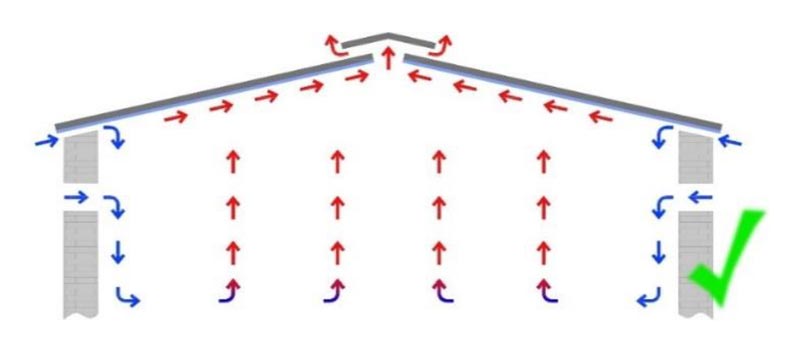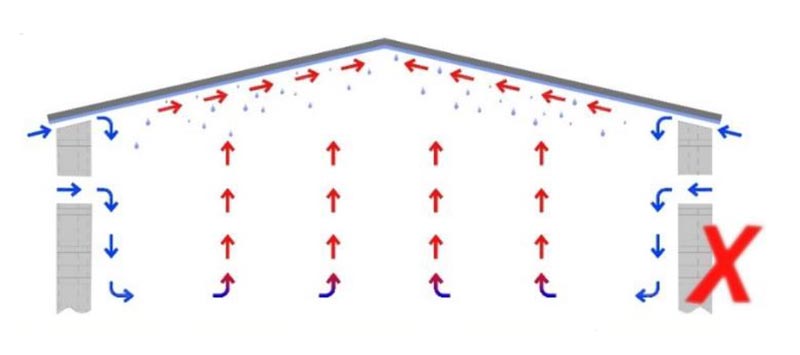Menu
Dripstop offers a verified and cost-effective solution to prevent condensation from dripping underneath a metal roof with uninsulated panels. It accomplishes this by capturing and subsequently releasing water droplets into the air.
The Dripstop membrane transforms steel sheeting into anti-condensation roof sheets. Specifically designed for buildings experiencing moderate to high humidity levels, it acts as a vapor barrier on metal roofing panels to minimize dripping and the flow of condensate.
Dripstop utilises specially designed pockets in its felt membrane to trap moisture. In high-temperature and high-humidity conditions, it manages the cyclical formation of condensate beneath steel roofing. While it doesn’t prevent condensation, a functioning Dripstop feels damp to the touch. Effective operation requires a pitched roof of 10 degrees or more, as a shallower angle may cause water droplets to drip without proper evaporation. Adequate ventilation is crucial for Dripstop to release condensation back into the air, preventing potential water damage to the building’s contents.
Dripstop anti-condensation membrane controls the condensation in an environment, where condensation is likely to occur. The membrane serves as an absorbing medium, preventing drops of water falling from the roof. In spite of high water absorption capacity (for details check technical data sheet), Dripstop can get saturated if it has no possibility to dry out. In order to work properly, the membrane needs to get dry during the day. For that reason adequate ventilation inside the building is necessary.
Please keep in mind that humid air is lighter than dry air, therefore it tends to rise. This has to be taken into account when planning the ventilation system of a building. The following situations clearly demonstrate the difference between adequate and inadequate ventilation inside a building.

Adequate ventilation in an insulated building with air inflow at the sides and air outflow through a roof ridge.

Inadequate ventilation in an insulated building with air inflow at the sides, but no openings on the ridge, which gives humid air no possibility to escape. The result is dripping from the roof which damages the insulation layer.

Adequate ventilation in an un-insulated building with air inflow at the sides and air outflow through a roof ridge.

Inadequate ventilation in an un-insulated building with air inflow at the sides, but no openings on the ridge, which gives humid air no possibility to escape. The result is dripping from the roof which damages the insulation layer.